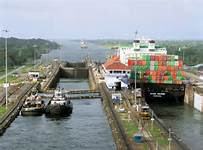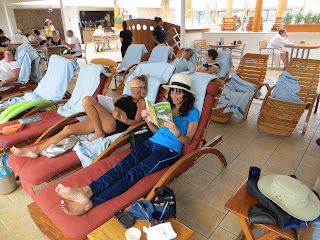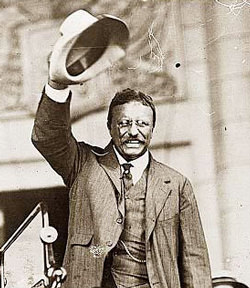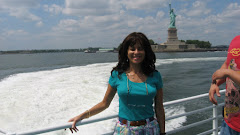Today, we took the 50-mile journey from the Atlantic Ocean to the Pacific Ocean via the famous engineering marvel, The Panama Canal. Of note, the canal saves 8,000 off the route around Cape Horn.
I was fortunate to have taken a land tour of Colon, The largest set of locks (Gatun), and the colonial city of Panama City, yesterday. At Gatun, I witnessed two ships being carried through the locks, in two separate directions.
My Videos from Gatun Locks Viewing Area:
http://youtu.be/P1okiJyhOXs
http://youtu.be/4dvFFPIMmOc
We entered the canal at 7AM, reaching the 1st and largest set of locks, The Gatun Locks, at 7:30. We experienced the 3-step raising of the ship as we were pulled along by 3 sets of locomotives on each side. The 1st locks took 1.5 hours to transit; the 2nd and 3rd took approximately 45 minutes each.
I spent all day watching our progress, photographing sites along the way, from a lounge chair on deck and from various viewing points on the ship. It was exhilarating to be a part of a select group of 2000 tourists making this journey together.
My video of transit from ship: http://youtu.be/fRhNphGp9QE
The Transit
Here is a brief summary of how the locks work:
The canal is composed of 3 sets of locks that operate as water lifts to elevate ships 3 feet above sea level to the level of the Gatun Lake, in their transit of the continental Divide, then, lower them back down to sea level on the opposite side of the isthmus.
The History
I read books, listened to lectures, and watched the documentary film: A Man, A Plan, and A Canal: Panama and still cannot get enough of the history!
In a nutshell—the history is a fascinating account of how the vision and determination of a few strong personalities, triumph over adversity, and simple synchronicity helped to produce one of the greatest engineering marvels of all time. From the confident wheeling dealing financier De Lessups, mastermind of the Suez Canal; to the ingenious, persuasive, persistent Bunau-Varilla; to the expansionist, outspoken, champion of military sea power, Theodore Roosevelt; to the 3 chief engineers charged with project completion, there were a colorful cast of characters involved---none of whom, were Panamanian nor Columbian.
Despite the numerous obstacles during 2 separate decades of a French then American campaign such as impenetrable mountainous terrain; monsoon rains that produced damaging landslides; swarms of deadly disease-carrying mosquitoes (yellow fever and malaria killed thousands) and poisonous snakes; inadequate equipment; lack of infrastructure; dwindling and insufficient funding; stubborn personalities; the wild, unruly Chagres river; stifling heat; and more----- the engineering feat was finally completed!
There were major twists of fate including 1) close votes in congress that determined a locks vs. sea-level canal (vote of 36 to 31); 2) Congress voting 42 to 34 to locate the canal in Panama versus Nicaragua, and 3) President Mc Kinley’s assassination that placed Theodore Roosevelt, the persistent expansionist, at the helm of the country.
What’s most interesting is that the only reason the country of Panama came into being is because of the drive to build a canal linking Atlantic to the Pacific. Columbia, of which Panama was a district, erected several “obstacles” to the canal construction----chiefly, a refusal to turn over sovereignty to the US. In response, The US and Bunau-Varilla instigated a revolution, helping Panama gain its independence from Columbia. The orchestration of this bloodless coup did not originate with Panamanians but with a Frenchman and the US, through the use of “gunboat diplomacy”.



























.jpg)
.jpg)




No comments:
Post a Comment